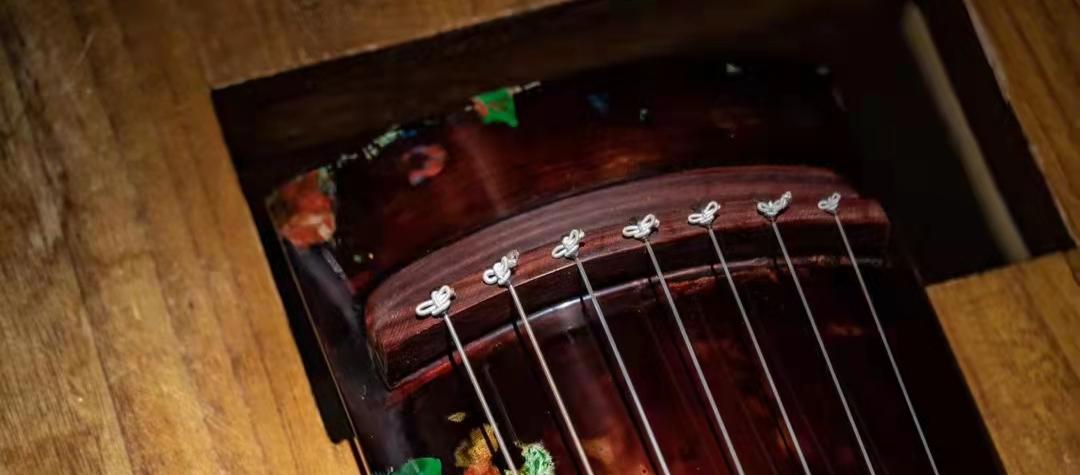Guqin culture, or guqin art and guqin music, is a relationship of one and two, one and three. Guqin music is its essence, guqin art is the spirit, and guqin culture is its whole picture. Guqin music is the art of self-sustenance of thoughts and feelings, and social spiritual consciousness.
Guqin culture is a social thing that extends from the guqin music and art to the corresponding category. This has made it occupy a very high historical position for more than three thousand years since the emergence of the Shang Zhou. Although in the mid-nineteenth and mid-twentieth centuries, the guqin declined with the decline of Chinese society and experienced a severe crisis of extinction, but since the late twentieth century, it has begun to regain its vitality.

The sages of the predecessors who appeared in the piano world in the early twentieth century: Cha Fuxi, Wu Jingluo, Guan Pinghu, and Zhang Ziqian rose up to save the guqin. In 1935, under the auspices of the former master of Chafu West, a questionnaire survey was conducted, and it was learned that there were less than 200 people in the country who could play the piano. In 1956, the inspector visited the piano players again and learned that there were less than 100 people in the country who could play the piano.
Since 1956, under the leadership of the Ministry of Culture and the Chinese Musicians Association, the Central Conservatory of Music and other professional colleges have opened guqin majors, the Beijing Guqin Research Association has carried out public performances and academic activities, and the publishing department has made strong investment, and the guqin art has begun to have vitality.
Although the proportion of guqin art in the entire social culture is still extremely small, it is already extensive and strong with other categories of national musical instruments, such as dong zhen, etc. In more and more and more important performances at home and abroad, the piano occupies an important position. In many film and television works, the piano has also become the icing on the cake or the finishing touch.
Nowadays, in many parts of the country, there are countless piano clubs, piano halls, and piano shops with the teaching of the piano as the main content, and the guqin culture meets the needs of various cultural orientations: the hobby of ancient music, the experience of the life of the ancient literati and nobles, the feelings of the ancient literati and noble spirits, the absorption of the ancient literati aristocratic demeanor, and the pursuit of the noble status of the ancient literati.
In addition, the guqin has also triggered some heavier goals: health maintenance, mind cultivation, meditation, meditation, and even moving to tea tasting, reading, tai chi, yoga and other activities, and has become a solemn trip with the meaning of cultivation and seeking the Tao in all of the above items.
Before the Cultural Revolution, in the field of Chinese music history, except for Wang Guangqi in the 1930s and Yang Yinliu in the 1950s and 1960s, the rest of the people rarely talked about the guqin. In the history of ancient China, the history of Chinese aesthetics, and the history of Chinese philosophy, the guqin is basically lacking.
In the revival of the traditional spirit after the Cultural Revolution, guqin culture entered some music academic works and other cultural works, and also became the subject of some professional music academies, and was paid more and more attention. In the development of the new piano, these years have also made rapid progress.
In the mid-1950s, a new instrument of an experimental product from the Suzhou National Musical Instrument Factory had made Mr. Cha Fuxi, the ancestor, very excited, and today, thousands of people in many provinces, cities and counties have invested in the production of the piano in factories or their own workshops.
Countless new pianos flow into the market to heat the needs of people who are interested in the piano. At the same time, there are more ancient good pianos in the cultural relics market and auctions around the world, constantly circulating at amazing prices, setting off the wind and waves.
This situation is gradually approaching that in ancient times, the forbidden palaces of emperors, the homes of nobles, the houses of merchants, and the residences of literati often had pianos or were hidden in secret rooms or hung in walls or chen on cases. Even if he cannot play the piano, he still thinks that the representation of identity status, the carrier of culture and art or the display of antique furnishings, and the antique calligraphy and paintings meet their needs for the spirit of Chinese culture.
However, what we should emphasize is that guqin culture is the crystallization of the Chinese nation's thousands of years of thoughts, feelings, wisdom and spirit, and its form and essence, status and weight should be the same as the poetry classic, Chu Ci, Tang poetry, and Song Ci, which should become one of the basic knowledge of each Chinese.
To meet such requirements, I suggest that guqin-related courses should be clearly arranged in the nine-year compulsory education. As a Chinese, you can dislike the art of the guqin, but you can't be unaware. In today's era, as a Chinese, if it is not clear that Li Bai and Du Fu are absolutely abnormal, and if the basic knowledge of each Chinese cannot be achieved within ten years, there must be guqin art, which is an unforgivable pathology of social culture, and it is not just the shame of my generation of piano people.